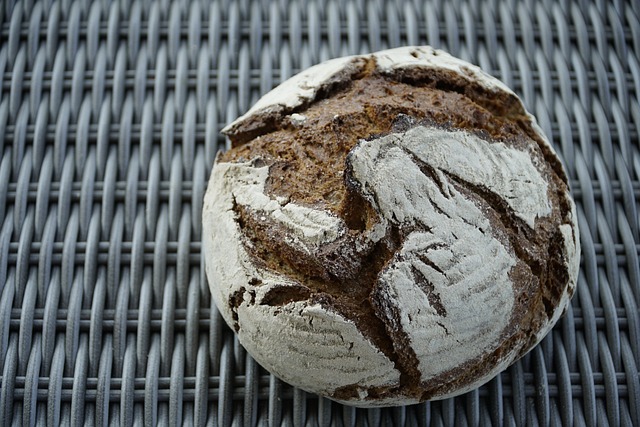
Germany’s association with bread stretches back thousands of years, intertwining itself in the rich tapestry of the country’s history, culture, and day-to-day life. With over a thousand varieties of bread recorded, Germany has the most diverse range of bread products in the world. From the dense and hearty loaves of the north to the lighter, crusty breads of the south, the nation’s love for its bread is undeniable.
Prehistoric Beginnings and Early Middle Ages
Bread’s history in Germany dates back to the prehistoric times when early Germanic tribes cultivated emmer and einkorn, two ancient grains. The process was laborious, with the grains being ground between rocks and then mixed with water before being cooked on hot stones.
In the Middle Ages, bread baking became more sophisticated. The introduction of water mills revolutionized the grinding process, making it more efficient. Meanwhile, yeast was increasingly used as a leavening agent, leading to lighter, airier loaves.
During this time, rye bread became the staple for most Germans, especially those in the northern regions where rye was easier to grow than wheat. This gave birth to the iconic German rye bread, known for its hearty texture and robust flavor.
The Influence of the Reinheitsgebot
In 1516, the Reinheitsgebot, or the “Beer Purity Law,” was enacted in Bavaria. While it primarily regulated the ingredients that could be used in brewing beer, it had a significant effect on the bread industry as well. The law reserved the use of wheat for beer, leaving rye and barley for bread. This further solidified the place of rye bread in German culinary history, creating the base for varieties like Pumpernickel and Vollkornbrot.
Industrial Revolution and Bread Diversity
The Industrial Revolution in the 19th century brought about significant changes in the production of bread. Steam-powered mills allowed for greater quantities of flour to be produced, while commercial yeast became more accessible.
In the southern regions of Germany, where wheat was more prevalent, a variety of wheat breads began to emerge. These included Weißbrot (white bread) and Brötchen (small, crusty rolls), which became staples alongside the rye and mixed grain breads of the north.
Bread During the World Wars
The World Wars had a significant impact on German bread production. Wartime shortages and rationing led to the use of alternative ingredients such as potato starch, leading to the creation of potato bread, or Kartoffelbrot.
In post-war Germany, bread continued to be a staple, but the quality varied widely due to economic constraints. It was during this time that Germany started regulating bread quality and ensuring its diversity, a step that preserved the rich heritage of German bread.
German Bread Today
Today, the German bread tradition is recognized and cherished. In 2014, UNESCO acknowledged the significance of German bread culture by adding it to its list of intangible cultural heritage.
There are now over 1,000 officially recognized types of bread in Germany, with each region having its specialities. The Black Forest region, for example, is known for its sourdough rye bread, while the Bavarian region is famous for its pretzels.
In conclusion, the history of German bread is a testament to the nation’s resilience and innovation. It tells the story of its people, from early farmers tilling the land, to the millers and bakers transforming simple ingredients into an extraordinary variety of loaves. The loaf, thus, is not just food but a symbol of German history and culture, nourishing its people and binding them together in a shared tradition.
 A Taste of Tradition: The Rich History of Stollen Bread - As we explore the unique culinary traditions across the world, Germany’s rich food culture serves up a sweet surprise – the Stollen bread. This distinctive and festive bread, dusted with powdered sugar to resemble the snow-covered landscape of winter, takes center stage during the holiday season. It’s a beloved food tradition that embodies centuries of […]
A Taste of Tradition: The Rich History of Stollen Bread - As we explore the unique culinary traditions across the world, Germany’s rich food culture serves up a sweet surprise – the Stollen bread. This distinctive and festive bread, dusted with powdered sugar to resemble the snow-covered landscape of winter, takes center stage during the holiday season. It’s a beloved food tradition that embodies centuries of […]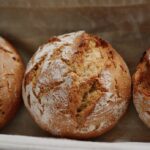 Authentic Roggenbrot Recipe: A Taste of German Tradition - Roggenbrot, also known as German rye bread, is a staple in German cuisine and has been enjoyed for centuries. This hearty and flavorful bread is made primarily from rye flour, giving it a distinct taste and texture that sets it apart from other bread varieties. In this article, we will delve into the art of […]
Authentic Roggenbrot Recipe: A Taste of German Tradition - Roggenbrot, also known as German rye bread, is a staple in German cuisine and has been enjoyed for centuries. This hearty and flavorful bread is made primarily from rye flour, giving it a distinct taste and texture that sets it apart from other bread varieties. In this article, we will delve into the art of […]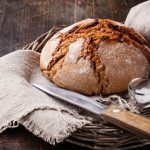 Bauernbrot - Authentic-tasting German bread is easier to make than you’d think. Bauernbrot, or farmer’s bread, is a hearty rye bread that is the standard loaf in many German homes, especially in the south. It was traditionally made from scratch in farm homes and baked in age-old, wood-fired ovens. It takes a few hours from start to […]
Bauernbrot - Authentic-tasting German bread is easier to make than you’d think. Bauernbrot, or farmer’s bread, is a hearty rye bread that is the standard loaf in many German homes, especially in the south. It was traditionally made from scratch in farm homes and baked in age-old, wood-fired ovens. It takes a few hours from start to […]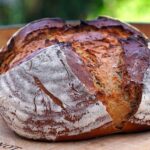 Bauernbrot – German Farmer’s Bread Recipe - Crisp crust. Deep rye flavor. Rustic aroma. Few things are more comforting than a thick slice of warm Bauernbrot, or German Farmer’s Bread, slathered with butter. This hearty, crusty loaf is a staple of traditional German cuisine and has been a mealtime essential for centuries. Bauernbrot is beloved not just for its bold taste and […]
Bauernbrot – German Farmer’s Bread Recipe - Crisp crust. Deep rye flavor. Rustic aroma. Few things are more comforting than a thick slice of warm Bauernbrot, or German Farmer’s Bread, slathered with butter. This hearty, crusty loaf is a staple of traditional German cuisine and has been a mealtime essential for centuries. Bauernbrot is beloved not just for its bold taste and […]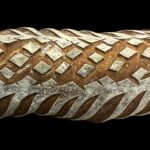 Berliner Landbrot (Berlin Country Bread) Recipe - Hearty, aromatic, and full of character, Berliner Landbrot – or Berlin Country Bread – is a traditional mixed-flour sourdough loaf beloved for its bold crust and slightly tangy flavor. Originating from the Brandenburg-Berlin region, this bread is as rustic as it is reliable. Baked in a round or oval shape with a deeply browned crust, […]
Berliner Landbrot (Berlin Country Bread) Recipe - Hearty, aromatic, and full of character, Berliner Landbrot – or Berlin Country Bread – is a traditional mixed-flour sourdough loaf beloved for its bold crust and slightly tangy flavor. Originating from the Brandenburg-Berlin region, this bread is as rustic as it is reliable. Baked in a round or oval shape with a deeply browned crust, […]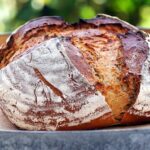 Bierbrot (Beer Bread) Recipe - Hearty, aromatic, and surprisingly easy to make, Bierbrot – or German Beer Bread – is a rustic loaf that brings bold flavor with minimal effort. Thanks to the natural yeast and malt in beer, this bread has a rich, complex taste and a wonderfully chewy texture, perfect for casual meals, cheese boards, or hearty stews. […]
Bierbrot (Beer Bread) Recipe - Hearty, aromatic, and surprisingly easy to make, Bierbrot – or German Beer Bread – is a rustic loaf that brings bold flavor with minimal effort. Thanks to the natural yeast and malt in beer, this bread has a rich, complex taste and a wonderfully chewy texture, perfect for casual meals, cheese boards, or hearty stews. […]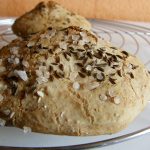 Briegel – Original Schwäbische Brötchen - Ingredients: 400 g all-purpose wheat flour 100 g spelt flour (Dinkelmehl) 20 g fresh pressed yeast 2 tsp salt 1 tsp sugar 350 g warm water some coarse salt and cumin seeds for garnish Preparation: Mix together flour, salt, sugar, yeast and 250 g warm water till smooth. Add the rest of water. […]
Briegel – Original Schwäbische Brötchen - Ingredients: 400 g all-purpose wheat flour 100 g spelt flour (Dinkelmehl) 20 g fresh pressed yeast 2 tsp salt 1 tsp sugar 350 g warm water some coarse salt and cumin seeds for garnish Preparation: Mix together flour, salt, sugar, yeast and 250 g warm water till smooth. Add the rest of water. […] Brot mit Kräutern (Herb Bread) Recipe - Fragrant, flavorful, and full of rustic charm, Brot mit Kräutern – or German Herb Bread – is a savory favorite that elevates everyday meals with aromatic herbs baked right into the dough. Perfect for soups, stews, or cheese boards, this bread brings a touch of the countryside to your kitchen. With flexible flavor combinations and […]
Brot mit Kräutern (Herb Bread) Recipe - Fragrant, flavorful, and full of rustic charm, Brot mit Kräutern – or German Herb Bread – is a savory favorite that elevates everyday meals with aromatic herbs baked right into the dough. Perfect for soups, stews, or cheese boards, this bread brings a touch of the countryside to your kitchen. With flexible flavor combinations and […]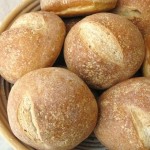 Brötchen (Crusty German Rolls) - Brötchen is a small crusty roll that is cherished in Germany. It is also perfect for a sandwich or as a roll for a bratwurst. “Kipfen – Wecken – Semmel – Weggli – Schrippe – Feierabend Brötchen – Rundstück”. These are all words for the very normal, white, small, round roll that you see in […]
Brötchen (Crusty German Rolls) - Brötchen is a small crusty roll that is cherished in Germany. It is also perfect for a sandwich or as a roll for a bratwurst. “Kipfen – Wecken – Semmel – Weggli – Schrippe – Feierabend Brötchen – Rundstück”. These are all words for the very normal, white, small, round roll that you see in […]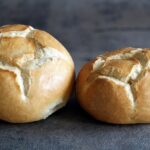 Brötchen – How to Make German Bread Rolls - Brötchen are the heart and soul of the German breakfast table. These small, crusty rolls are as essential to German life as coffee or butter. Whether picked up fresh from the local bakery at dawn or baked at home on a lazy Sunday morning, Brötchen (literally “little breads”) are a tradition that never goes out […]
Brötchen – How to Make German Bread Rolls - Brötchen are the heart and soul of the German breakfast table. These small, crusty rolls are as essential to German life as coffee or butter. Whether picked up fresh from the local bakery at dawn or baked at home on a lazy Sunday morning, Brötchen (literally “little breads”) are a tradition that never goes out […]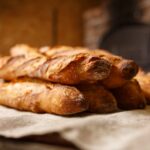 Classic Swabian Bread Recipe: A Slice of German Culinary Heritage - Bread holds a special place in German cuisine, and when it comes to the southwestern region of Swabia, their bread-making traditions are truly exceptional. Swabian bread is known for its hearty texture, distinct flavors, and time-honored baking techniques. In this article, we will guide you through an authentic Swabian bread recipe, allowing you to savor […]
Classic Swabian Bread Recipe: A Slice of German Culinary Heritage - Bread holds a special place in German cuisine, and when it comes to the southwestern region of Swabia, their bread-making traditions are truly exceptional. Swabian bread is known for its hearty texture, distinct flavors, and time-honored baking techniques. In this article, we will guide you through an authentic Swabian bread recipe, allowing you to savor […]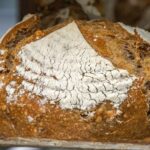 Dinkelbrot – Traditional German Spelt Bread Recipe - Nutty, wholesome, and wonderfully aromatic, Dinkelbrot – German Spelt Bread – is a traditional favorite making a big comeback in modern kitchens. Made from spelt flour, an ancient grain prized for its rich flavor and nutritional value, Dinkelbrot is lighter than rye but heartier than wheat, with a slightly sweet, nutty note that makes every […]
Dinkelbrot – Traditional German Spelt Bread Recipe - Nutty, wholesome, and wonderfully aromatic, Dinkelbrot – German Spelt Bread – is a traditional favorite making a big comeback in modern kitchens. Made from spelt flour, an ancient grain prized for its rich flavor and nutritional value, Dinkelbrot is lighter than rye but heartier than wheat, with a slightly sweet, nutty note that makes every […]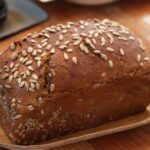 Dinkelvollkornbrot (Whole Spelt Bread) Recipe - Wholesome, nutty, and full of fiber, Dinkelvollkornbrot – or Whole Spelt Bread – is a hearty and nourishing staple in German kitchens. Made entirely with spelt flour, this loaf offers a slightly sweet, earthy flavor and a dense yet tender crumb, making it ideal for sandwiches, toasts, or traditional Abendbrot. With its ancient grain roots […]
Dinkelvollkornbrot (Whole Spelt Bread) Recipe - Wholesome, nutty, and full of fiber, Dinkelvollkornbrot – or Whole Spelt Bread – is a hearty and nourishing staple in German kitchens. Made entirely with spelt flour, this loaf offers a slightly sweet, earthy flavor and a dense yet tender crumb, making it ideal for sandwiches, toasts, or traditional Abendbrot. With its ancient grain roots […] Fastenbrot (Fasting Bread) Recipe - Simple, rustic, and nourishing, Fastenbrot or German Fasting Bread is rooted in centuries-old monastic traditions. This dense, fiber-rich loaf was historically prepared during Lent and other fasting periods as a wholesome, satisfying bread that nourished without indulgence. Crafted from whole grains, seeds, and minimal fat, Fastenbrot is still cherished today for its health benefits and […]
Fastenbrot (Fasting Bread) Recipe - Simple, rustic, and nourishing, Fastenbrot or German Fasting Bread is rooted in centuries-old monastic traditions. This dense, fiber-rich loaf was historically prepared during Lent and other fasting periods as a wholesome, satisfying bread that nourished without indulgence. Crafted from whole grains, seeds, and minimal fat, Fastenbrot is still cherished today for its health benefits and […]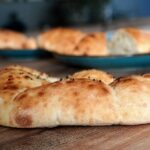 Fladenbrot (Flatbread) Recipe - Light, fluffy, and dotted with golden sesame seeds, Fladenbrot – or German-style flatbread – is a staple at Turkish-German bakeries and dinner tables alike. While its roots trace back to Middle Eastern and Mediterranean baking traditions, Fladenbrot has become a beloved part of Germany’s diverse food culture. Soft on the inside with a slightly crisp […]
Fladenbrot (Flatbread) Recipe - Light, fluffy, and dotted with golden sesame seeds, Fladenbrot – or German-style flatbread – is a staple at Turkish-German bakeries and dinner tables alike. While its roots trace back to Middle Eastern and Mediterranean baking traditions, Fladenbrot has become a beloved part of Germany’s diverse food culture. Soft on the inside with a slightly crisp […]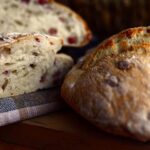 Früchtebrot (Fruit Bread) Recipe - Fragrant, rich, and naturally sweet Früchtebrot or German Fruit Bread is a festive loaf filled with dried fruits, nuts, and spices. Traditionally enjoyed during the Christmas season and throughout Advent, this dense bread is a delicious slice of Germany’s holiday baking heritage. Perfect as a seasonal gift or for serving alongside tea or Glühwein, Früchtebrot […]
Früchtebrot (Fruit Bread) Recipe - Fragrant, rich, and naturally sweet Früchtebrot or German Fruit Bread is a festive loaf filled with dried fruits, nuts, and spices. Traditionally enjoyed during the Christmas season and throughout Advent, this dense bread is a delicious slice of Germany’s holiday baking heritage. Perfect as a seasonal gift or for serving alongside tea or Glühwein, Früchtebrot […]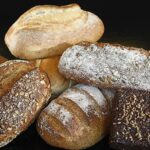 German Bread: The Heart of Germany’s Baking Culture - Bread in Germany isn’t just food – it’s a birthright, a ritual, a national obsession. With more than 3,200 officially recognized varieties, Germany proudly holds the title of the most diverse bread culture in the world. Whether you’re biting into a warm, crusty Brötchen at breakfast or savoring a thick slice of dense Pumpernickel at […]
German Bread: The Heart of Germany’s Baking Culture - Bread in Germany isn’t just food – it’s a birthright, a ritual, a national obsession. With more than 3,200 officially recognized varieties, Germany proudly holds the title of the most diverse bread culture in the world. Whether you’re biting into a warm, crusty Brötchen at breakfast or savoring a thick slice of dense Pumpernickel at […]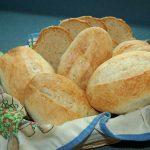 German Brötchen - A recipe of wonderful crusty German Brötchen by Marion Jackson, in English and German. Ingredients: 1000 g Mehl / flour 12 g instant Hefe / yeast (3 TL/tsp) 25 g Backmalz / dry malt powder 15 g Salz / salt 635 g warmes Wasser / tepid water Preparation: First mix the instant yeast and the […]
German Brötchen - A recipe of wonderful crusty German Brötchen by Marion Jackson, in English and German. Ingredients: 1000 g Mehl / flour 12 g instant Hefe / yeast (3 TL/tsp) 25 g Backmalz / dry malt powder 15 g Salz / salt 635 g warmes Wasser / tepid water Preparation: First mix the instant yeast and the […]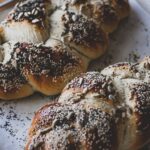 Hefezopf Recipe – Traditional German Sweet Braided Bread - Few things smell as inviting as a freshly baked Hefezopf, the traditional German sweet yeast braid. This light, slightly sweet bread has a delicate, fluffy crumb and a golden-brown crust, making it a favorite for breakfast, brunch, or holiday gatherings. Hefezopf is often compared to Osterzopf, but unlike the Easter-specific version, Hefezopf is enjoyed year-round […]
Hefezopf Recipe – Traditional German Sweet Braided Bread - Few things smell as inviting as a freshly baked Hefezopf, the traditional German sweet yeast braid. This light, slightly sweet bread has a delicate, fluffy crumb and a golden-brown crust, making it a favorite for breakfast, brunch, or holiday gatherings. Hefezopf is often compared to Osterzopf, but unlike the Easter-specific version, Hefezopf is enjoyed year-round […]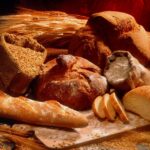 How Germany Became the Land of Bread: A Deep Dive into 300+ Types of German Bread - Germany is often referred to as the “Land of Bread”, boasting an incredible variety of over 300 different types of bread and thousands of regional variations. Bread is not just a staple in Germany; it is a cultural icon and a part of daily life. But how did Germany develop such a rich bread culture? […]
How Germany Became the Land of Bread: A Deep Dive into 300+ Types of German Bread - Germany is often referred to as the “Land of Bread”, boasting an incredible variety of over 300 different types of bread and thousands of regional variations. Bread is not just a staple in Germany; it is a cultural icon and a part of daily life. But how did Germany develop such a rich bread culture? […]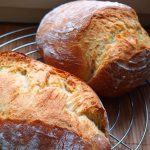 Kartoffelbrot – German Potato Bread - This delicious bread is made from mashed potatoes and flour. The combination may seem a little unusual but the end result is extraordinarily soft and springy bread. Ingredients: 300 g potatoes, peeled, boiled 1 tsp dried fast-action yeast 1 tsp sugar 1 tbsp sunflower oil, plus extra for greasing 1 tsp fine sea salt 300g […]
Kartoffelbrot – German Potato Bread - This delicious bread is made from mashed potatoes and flour. The combination may seem a little unusual but the end result is extraordinarily soft and springy bread. Ingredients: 300 g potatoes, peeled, boiled 1 tsp dried fast-action yeast 1 tsp sugar 1 tbsp sunflower oil, plus extra for greasing 1 tsp fine sea salt 300g […]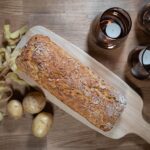 Kartoffelbrot – German Potato Bread Recipe - Soft, moist, and subtly sweet, Kartoffelbrot – German Potato Bread – is a delightful twist on traditional loaves. Thanks to the addition of mashed potatoes, this bread boasts a tender crumb and excellent shelf life, making it a favorite in both bakeries and home kitchens across Germany. Kartoffelbrot bridges rustic tradition with comforting texture. It’s […]
Kartoffelbrot – German Potato Bread Recipe - Soft, moist, and subtly sweet, Kartoffelbrot – German Potato Bread – is a delightful twist on traditional loaves. Thanks to the addition of mashed potatoes, this bread boasts a tender crumb and excellent shelf life, making it a favorite in both bakeries and home kitchens across Germany. Kartoffelbrot bridges rustic tradition with comforting texture. It’s […] Krustenbrot (Crusty Bread) Recipe - Crackly on the outside, airy on the inside – Krustenbrot, or German Crusty Bread, is a bakery staple across Germany and a dream loaf for crust lovers. Its bold, caramelized exterior seals in flavor and moisture, making every slice a perfect blend of crunch and chew. Krustenbrot is often enjoyed with savory spreads, hearty meats, […]
Krustenbrot (Crusty Bread) Recipe - Crackly on the outside, airy on the inside – Krustenbrot, or German Crusty Bread, is a bakery staple across Germany and a dream loaf for crust lovers. Its bold, caramelized exterior seals in flavor and moisture, making every slice a perfect blend of crunch and chew. Krustenbrot is often enjoyed with savory spreads, hearty meats, […]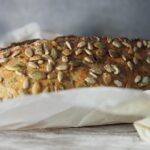 Kürbiskernbrot (Pumpkin Seed Bread) Recipe - Nutty, hearty, and visually striking, Kürbiskernbrot – or German Pumpkin Seed Bread – is a rustic favorite that brings depth and texture to every bite. With its golden crumb and crunchy green seeds both inside and out, this loaf is as wholesome as it is beautiful. Perfect for sandwiches, soups, or snacking on its own, […]
Kürbiskernbrot (Pumpkin Seed Bread) Recipe - Nutty, hearty, and visually striking, Kürbiskernbrot – or German Pumpkin Seed Bread – is a rustic favorite that brings depth and texture to every bite. With its golden crumb and crunchy green seeds both inside and out, this loaf is as wholesome as it is beautiful. Perfect for sandwiches, soups, or snacking on its own, […] Malzbrot (Malt Bread) Recipe - Dark, dense, and rich with a hint of sweetness, Malzbrot – or German Malt Bread – is a flavorful loaf beloved for its unique depth and chewy texture. Whether enjoyed with butter and jam or served alongside cheeses and savory spreads, this bread stands out for its warm, malty character and beautiful color. Traditionally made […]
Malzbrot (Malt Bread) Recipe - Dark, dense, and rich with a hint of sweetness, Malzbrot – or German Malt Bread – is a flavorful loaf beloved for its unique depth and chewy texture. Whether enjoyed with butter and jam or served alongside cheeses and savory spreads, this bread stands out for its warm, malty character and beautiful color. Traditionally made […] Mischbrot (Mixed Flour Bread) - Simple, flavorful, and deeply satisfying Mischbrot or German Mixed Flour Bread is a staple loaf found in nearly every bakery across the country. With a balanced blend of wheat and rye flours, Mischbrot offers the best of both worlds: the lightness of wheat and the earthy depth of rye. Its crisp crust and moist crumb […]
Mischbrot (Mixed Flour Bread) - Simple, flavorful, and deeply satisfying Mischbrot or German Mixed Flour Bread is a staple loaf found in nearly every bakery across the country. With a balanced blend of wheat and rye flours, Mischbrot offers the best of both worlds: the lightness of wheat and the earthy depth of rye. Its crisp crust and moist crumb […] Mohnbrötchen (Poppy Seed Rolls) - Soft, airy, and crowned with a speckled crunch Mohnbrötchen or German Poppy Seed Rolls are a bakery classic and breakfast must-have across Germany. Whether paired with sweet or savory toppings, these rolls are a textural delight thanks to their crisp crust and pillowy interior. Baked fresh each morning in bakeries throughout the country, Mohnbrötchen are […]
Mohnbrötchen (Poppy Seed Rolls) - Soft, airy, and crowned with a speckled crunch Mohnbrötchen or German Poppy Seed Rolls are a bakery classic and breakfast must-have across Germany. Whether paired with sweet or savory toppings, these rolls are a textural delight thanks to their crisp crust and pillowy interior. Baked fresh each morning in bakeries throughout the country, Mohnbrötchen are […]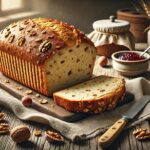 Nussbrot (Nut Bread) Recipe - Rich in texture and packed with earthy flavor, Nussbrot, or German Nut Bread, is a satisfying loaf perfect for fall and winter baking – or anytime you’re craving something hearty. This dense, chewy bread is typically loaded with toasted nuts such as walnuts or hazelnuts and offers a nutty aroma that’s irresistible straight out of […]
Nussbrot (Nut Bread) Recipe - Rich in texture and packed with earthy flavor, Nussbrot, or German Nut Bread, is a satisfying loaf perfect for fall and winter baking – or anytime you’re craving something hearty. This dense, chewy bread is typically loaded with toasted nuts such as walnuts or hazelnuts and offers a nutty aroma that’s irresistible straight out of […]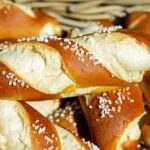 Original Laugenbrot Recipe: A Taste of Bavarian Tradition - Laugenbrot, also known as pretzel bread, is a delicious and beloved traditional Bavarian specialty. With its rich, golden crust and soft, chewy interior, Laugenbrot offers a unique flavor experience that combines the distinct taste of pretzels with the satisfying texture of a classic bread loaf. In this article, we will guide you through the process […]
Original Laugenbrot Recipe: A Taste of Bavarian Tradition - Laugenbrot, also known as pretzel bread, is a delicious and beloved traditional Bavarian specialty. With its rich, golden crust and soft, chewy interior, Laugenbrot offers a unique flavor experience that combines the distinct taste of pretzels with the satisfying texture of a classic bread loaf. In this article, we will guide you through the process […] Pretzels (Brezn) Recipe - Twisty, golden, and dotted with salt – Brezn, or German Pretzels, are more than just a snack; they’re a cultural icon. Crisp on the outside and soft within, these pretzels have been part of Germany’s culinary heritage for centuries. Whether served warm with butter, alongside beer, or as the base for a hearty Bavarian sandwich, […]
Pretzels (Brezn) Recipe - Twisty, golden, and dotted with salt – Brezn, or German Pretzels, are more than just a snack; they’re a cultural icon. Crisp on the outside and soft within, these pretzels have been part of Germany’s culinary heritage for centuries. Whether served warm with butter, alongside beer, or as the base for a hearty Bavarian sandwich, […]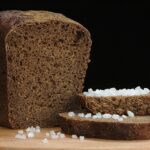 Pumpernickel – How to Make German Rye Bread - Pumpernickel is one of Germany’s most iconic and misunderstood breads. Dense, dark, and slightly sweet, it has been a staple in German cuisine for centuries. Originally from Westphalia, this slow-baked rye bread is famous for its unique taste and incredible shelf life. Though it may look intimidating, authentic Pumpernickel is surprisingly simple to make at […]
Pumpernickel – How to Make German Rye Bread - Pumpernickel is one of Germany’s most iconic and misunderstood breads. Dense, dark, and slightly sweet, it has been a staple in German cuisine for centuries. Originally from Westphalia, this slow-baked rye bread is famous for its unique taste and incredible shelf life. Though it may look intimidating, authentic Pumpernickel is surprisingly simple to make at […]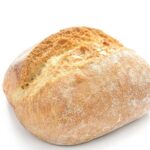 Quarkbrot (Quark Cheese Bread) Recipe - Moist, soft, and slightly tangy, Quarkbrot – or German Quark Cheese Bread – is a lesser-known gem that deserves a place in every baker’s kitchen. Made with Quark (a fresh cheese similar to ricotta or Greek yogurt), this bread boasts a tender crumb and a subtle richness that pairs perfectly with sweet or savory toppings. […]
Quarkbrot (Quark Cheese Bread) Recipe - Moist, soft, and slightly tangy, Quarkbrot – or German Quark Cheese Bread – is a lesser-known gem that deserves a place in every baker’s kitchen. Made with Quark (a fresh cheese similar to ricotta or Greek yogurt), this bread boasts a tender crumb and a subtle richness that pairs perfectly with sweet or savory toppings. […]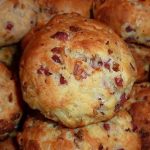 Räuberbrötchen - Indulge in the authentic flavors of Germany with our irresistible Räuberbrötchen recipe. These delectable pastry rolls are filled with a savory combination of meats, cheese, and aromatic herbs. Perfect for breakfast or as a tasty snack, discover how to make these mouthwatering treats and bring a touch of German tradition to your table. Try our […]
Räuberbrötchen - Indulge in the authentic flavors of Germany with our irresistible Räuberbrötchen recipe. These delectable pastry rolls are filled with a savory combination of meats, cheese, and aromatic herbs. Perfect for breakfast or as a tasty snack, discover how to make these mouthwatering treats and bring a touch of German tradition to your table. Try our […]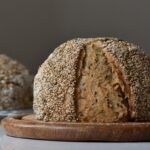 Roggenbrot (Rye Bread) Recipe - With its robust flavor and dense, chewy crumb, Roggenbrot – German Rye Bread – is a cornerstone of traditional German baking. Darker and heartier than wheat-based loaves, Roggenbrot offers a tangy complexity thanks to its high rye content and, often, a sourdough starter. Whether sliced for sandwiches or enjoyed with butter and cheese, Roggenbrot is […]
Roggenbrot (Rye Bread) Recipe - With its robust flavor and dense, chewy crumb, Roggenbrot – German Rye Bread – is a cornerstone of traditional German baking. Darker and heartier than wheat-based loaves, Roggenbrot offers a tangy complexity thanks to its high rye content and, often, a sourdough starter. Whether sliced for sandwiches or enjoyed with butter and cheese, Roggenbrot is […]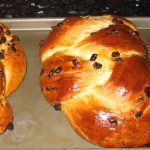 Rosinenbrot (German Raisin Bread) - Discover the perfect recipe for Rosinenbrot – German Raisin Bread. This delightful bread is filled with juicy raisins, offering a burst of sweetness in every bite. Learn how to make this traditional German treat and savor the aroma and flavor of freshly baked Rosinenbrot. Perfect for breakfast or as a tasty snack, this recipe will […]
Rosinenbrot (German Raisin Bread) - Discover the perfect recipe for Rosinenbrot – German Raisin Bread. This delightful bread is filled with juicy raisins, offering a burst of sweetness in every bite. Learn how to make this traditional German treat and savor the aroma and flavor of freshly baked Rosinenbrot. Perfect for breakfast or as a tasty snack, this recipe will […]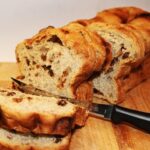 Rosinenbrot (Raisin Bread) Recipe - Sweet, soft, and delicately spiced, Rosinenbrot – or German Raisin Bread – is a comforting treat that’s perfect for breakfast, tea time, or a cozy afternoon snack. Made with plump raisins and a tender, enriched dough, it offers subtle sweetness and a nostalgic aroma of home baking. This golden loaf is a favorite across Germany, […]
Rosinenbrot (Raisin Bread) Recipe - Sweet, soft, and delicately spiced, Rosinenbrot – or German Raisin Bread – is a comforting treat that’s perfect for breakfast, tea time, or a cozy afternoon snack. Made with plump raisins and a tender, enriched dough, it offers subtle sweetness and a nostalgic aroma of home baking. This golden loaf is a favorite across Germany, […]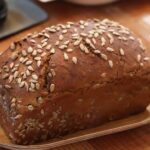 Schwarzbrot (Black Bread) Recipe - Dark, dense, and undeniably flavorful, Schwarzbrot – German Black Bread – is the bold cousin of rye and whole grain loaves. Packed with fiber, rich in sour tang, and often baked in brick-like loaves, this bread has been a dietary staple in Germany for centuries, particularly in the north. If you’re looking for something hearty […]
Schwarzbrot (Black Bread) Recipe - Dark, dense, and undeniably flavorful, Schwarzbrot – German Black Bread – is the bold cousin of rye and whole grain loaves. Packed with fiber, rich in sour tang, and often baked in brick-like loaves, this bread has been a dietary staple in Germany for centuries, particularly in the north. If you’re looking for something hearty […]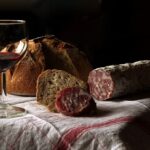 Schwarzbrot Recipe: Discover the Art of German Dark Bread - Schwarzbrot, German for “black bread”, is a staple of the German diet. This hearty, dense loaf is made from a mixture of whole grain rye flour and seeds, resulting in a bread that’s packed full of flavor and nutrients. Schwarzbrot is traditionally used in a variety of German dishes and is perfect for those who […]
Schwarzbrot Recipe: Discover the Art of German Dark Bread - Schwarzbrot, German for “black bread”, is a staple of the German diet. This hearty, dense loaf is made from a mixture of whole grain rye flour and seeds, resulting in a bread that’s packed full of flavor and nutrients. Schwarzbrot is traditionally used in a variety of German dishes and is perfect for those who […] Sesambrötchen (Sesame Rolls) Recipe - Golden, fluffy, and topped with a delicate crunch Sesambrötchen or German Sesame Rolls are a breakfast favorite throughout Germany. Whether picked up fresh from the local Bäckerei or baked at home, these soft-centered rolls with a crisp sesame-coated crust are a go-to accompaniment for butter, jam, cheese, or meats. They’re not only easy to love […]
Sesambrötchen (Sesame Rolls) Recipe - Golden, fluffy, and topped with a delicate crunch Sesambrötchen or German Sesame Rolls are a breakfast favorite throughout Germany. Whether picked up fresh from the local Bäckerei or baked at home, these soft-centered rolls with a crisp sesame-coated crust are a go-to accompaniment for butter, jam, cheese, or meats. They’re not only easy to love […]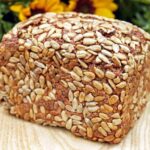 Sonnenblumenbrot (Sunflower Seed Bread) Recipe - Hearty, wholesome, and packed with nutty goodness, Sonnenblumenbrot – or German Sunflower Seed Bread – is a beloved staple known for its chewy crumb and crunchy topping. Whether enjoyed with butter, cheese, or a warm bowl of soup, this rustic loaf delivers comfort with every slice. Easy to bake and loaded with texture, it’s an […]
Sonnenblumenbrot (Sunflower Seed Bread) Recipe - Hearty, wholesome, and packed with nutty goodness, Sonnenblumenbrot – or German Sunflower Seed Bread – is a beloved staple known for its chewy crumb and crunchy topping. Whether enjoyed with butter, cheese, or a warm bowl of soup, this rustic loaf delivers comfort with every slice. Easy to bake and loaded with texture, it’s an […]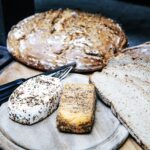 The Art of German Bread: A Delightful Culinary Tradition - German bread is renowned worldwide for its unparalleled quality, diverse flavors, and rich cultural heritage. Baking bread in Germany is considered an art form, and the country boasts an impressive variety of bread types, each with its own unique characteristics. In this article, we will explore the fascinating world of German bread, its history, popular […]
The Art of German Bread: A Delightful Culinary Tradition - German bread is renowned worldwide for its unparalleled quality, diverse flavors, and rich cultural heritage. Baking bread in Germany is considered an art form, and the country boasts an impressive variety of bread types, each with its own unique characteristics. In this article, we will explore the fascinating world of German bread, its history, popular […] The History of German Bread: A Crusty Chronicle - Germany’s association with bread stretches back thousands of years, intertwining itself in the rich tapestry of the country’s history, culture, and day-to-day life. With over a thousand varieties of bread recorded, Germany has the most diverse range of bread products in the world. From the dense and hearty loaves of the north to the lighter, […]
The History of German Bread: A Crusty Chronicle - Germany’s association with bread stretches back thousands of years, intertwining itself in the rich tapestry of the country’s history, culture, and day-to-day life. With over a thousand varieties of bread recorded, Germany has the most diverse range of bread products in the world. From the dense and hearty loaves of the north to the lighter, […]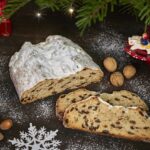 Traditional German Stollen Bread Recipe - If you’re looking to bake something unique and festive this holiday season, a traditional German Stollen Bread might be just the treat you’re looking for. Also known as Christmas Stollen or Christstollen, this bread is a delightful blend of nuts, fruits, and spices, all coated in a snowy dusting of powdered sugar, making it look […]
Traditional German Stollen Bread Recipe - If you’re looking to bake something unique and festive this holiday season, a traditional German Stollen Bread might be just the treat you’re looking for. Also known as Christmas Stollen or Christstollen, this bread is a delightful blend of nuts, fruits, and spices, all coated in a snowy dusting of powdered sugar, making it look […]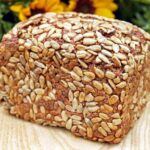 Vollkornbrot (Whole Grain Bread) - Dense, nutty, and nourishing, Vollkornbrot – or German Whole Grain Bread – is the kind of bread that practically defines German breakfasts. Made with whole grains, hearty flours, and often a hint of sourdough tang, it’s a staple found in bakeries and kitchens across the country. Whether it’s topped with cheese, cold cuts, or just […]
Vollkornbrot (Whole Grain Bread) - Dense, nutty, and nourishing, Vollkornbrot – or German Whole Grain Bread – is the kind of bread that practically defines German breakfasts. Made with whole grains, hearty flours, and often a hint of sourdough tang, it’s a staple found in bakeries and kitchens across the country. Whether it’s topped with cheese, cold cuts, or just […]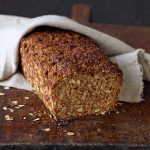 Vollkornbrot – German Wholegrain Bread - Experience the flavor and texture of Vollkornbrot like fresh from the German bakery! Dense, chewy, packed with nutrition and full of flavor, this German Vollkornbrot is wonderful with your choice of butter, jam, Nutella, cheese, or cold cuts. It features a grain called Einkorn that is used throughout much of western Europe, though you can […]
Vollkornbrot – German Wholegrain Bread - Experience the flavor and texture of Vollkornbrot like fresh from the German bakery! Dense, chewy, packed with nutrition and full of flavor, this German Vollkornbrot is wonderful with your choice of butter, jam, Nutella, cheese, or cold cuts. It features a grain called Einkorn that is used throughout much of western Europe, though you can […]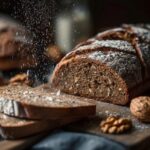 Walnussbrot (Walnut Bread) Recipe - Nutty, rustic, and beautifully textured, Walnussbrot – or German Walnut Bread – is a hearty loaf filled with toasted walnuts and whole grain goodness. Its rich flavor and chewy crumb make it perfect for both sweet and savory pairings, and it’s a staple in artisan bakeries across Germany. Whether served with cheese and wine or […]
Walnussbrot (Walnut Bread) Recipe - Nutty, rustic, and beautifully textured, Walnussbrot – or German Walnut Bread – is a hearty loaf filled with toasted walnuts and whole grain goodness. Its rich flavor and chewy crumb make it perfect for both sweet and savory pairings, and it’s a staple in artisan bakeries across Germany. Whether served with cheese and wine or […]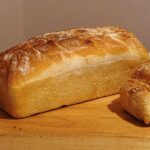 Weißbrot (White Bread) Recipe - Soft, fluffy, and beautifully golden, Weißbrot – or German White Bread – is a classic loaf that brings a light texture and mild flavor to the table. It’s perfect for everything from sandwiches to breakfast spreads and even makes an excellent base for French toast or bread pudding. Often shaped into loaves or braided rolls, […]
Weißbrot (White Bread) Recipe - Soft, fluffy, and beautifully golden, Weißbrot – or German White Bread – is a classic loaf that brings a light texture and mild flavor to the table. It’s perfect for everything from sandwiches to breakfast spreads and even makes an excellent base for French toast or bread pudding. Often shaped into loaves or braided rolls, […] Weizenbrötchen – German Rolls - Every German region has them, called “Rundstück” in Hamburg, “Schrippe” in Berlin, “Semmel” in Munich, or simply “Brötchen” (= little bread). The typical Brötchen has a crackly crisp crust and a fluffy, soft, easy to pull out crumb. In this recipe we are going to have crunchy seed topping but you can also give your […]
Weizenbrötchen – German Rolls - Every German region has them, called “Rundstück” in Hamburg, “Schrippe” in Berlin, “Semmel” in Munich, or simply “Brötchen” (= little bread). The typical Brötchen has a crackly crisp crust and a fluffy, soft, easy to pull out crumb. In this recipe we are going to have crunchy seed topping but you can also give your […]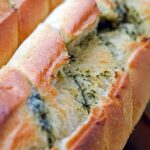 Zwiebelbrot (Onion Bread) Recipe - Savory, aromatic, and delightfully chewy Zwiebelbrot or German Onion Bread, brings a comforting twist to classic loaves. Packed with golden caramelized onions and sometimes flecked with herbs or bacon, this rustic bread is perfect for sandwiches, cheese boards, or soaking up soup. With its bold flavor and crisp crust, Zwiebelbrot has carved out a beloved […]
Zwiebelbrot (Onion Bread) Recipe - Savory, aromatic, and delightfully chewy Zwiebelbrot or German Onion Bread, brings a comforting twist to classic loaves. Packed with golden caramelized onions and sometimes flecked with herbs or bacon, this rustic bread is perfect for sandwiches, cheese boards, or soaking up soup. With its bold flavor and crisp crust, Zwiebelbrot has carved out a beloved […]